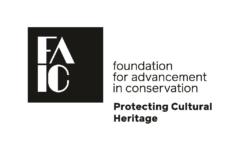
Managing the fire risk to collections and museums requires a multi-pronged strategy incorporating prevention programs, fire containment measures, as well as detection and suppression systems. When implemented together, the frequency of unintentional fires can be drastically reduced, and the impact of fires successfully managed. A brief review of the Smithsonian’s fire experience, lessons learned, and strategies employed to manage fire risk will be presented.
Presenters

Michael Kilby is the Associate Director for Fire Protection at the Smithsonian Institution, overseeing the fire protection and life safety programs for 19 museums and research centers. He is a licensed fire protection engineer, with over 30 years of experience safeguarding cultural properties from fire. Specific areas of expertise include risk assessment/mitigation and developing fire protection solutions for historic buildings, sensitive and high value collections, scientific operations, and exhibitions. While at the Smithsonian, he has dedicated his efforts to conducting risk assessments, reviewing designs, and providing project oversight to protect the Institution’s facilities – over 16 million square feet located throughout the Western Hemisphere. Working in this environment has provided him in-depth experience with mitigating risks in historic and culturally sensitive buildings and protecting irreplaceable collections.
Michael is also an active member on the National Fire Protection Association’s Cultural Resources Committee (NFPA 909 – Code for the Protection of Cultural Resource Properties & NFPA 914 – Code for the Fire Protection of Historic Structures). He has a BS in fire protection engineering and an MBA, both from the University of Maryland.
Recorded: Wednesday, May 6, 2020
Duration: 1 Hour 40 Minutes
Handouts
C2CCareFire Protection Strategies for Collections and Museums Resources
C2CCare Fire Protection Powerpoint Slides
*Please note: As of June 2020 the recording of the webinar and the slide presentation were unfortunately un-linked in the system. Users will want to download the powerpoint slides for this presentation before accessing the recording of the webinar. C2C Care is currently working on re-syncing the slides with the presentation.





